The Story of the Malakand Field Force by Winston S. Churchill (guided reading books txt) 📕
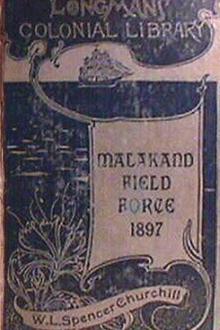
- Author: Winston S. Churchill
- Performer: -
Book online «The Story of the Malakand Field Force by Winston S. Churchill (guided reading books txt) 📕». Author Winston S. Churchill
Reveille sounded at half-past five, and at six o’clock the brigade marched out. In order to deal with the whole valley at once, the force was divided into three columns, to which were assigned the following tasks:—
I. The right column, under Lieut.-Col. Vivian, consisting of the 38th Dogras and some sappers, was ordered to attack the village of Domodoloh.
II. The centre column, under Colonel Goldney, consisting of six companies Buffs, six companies 35th Sikhs, a half-company sappers, four guns of No.8 Mountain Battery and the squadron of the 11th Bengal Lancers, was ordered to proceed to the head of the valley, and destroy the villages of Badelai and Shahi-Tangi (pronounced Shytungy). III. The left column, under Major Campbell, consisting of five companies of the Guides Infantry, and some sappers, was directed against several villages at the western end of the valley.
Two guns and two companies from each battalion were left to protect the camp, and a third company of the Guides was detached to protect the survey party. This reduced the strength of the infantry in the field to twenty-three companies, or slightly over 1200 men. Deducting the 300 men of the 38th Dogras who were not engaged, the total force employed in the action was about 1000 men of all arms.
It will be convenient to deal with the fortunes of the right column first. Lieut.-Colonel Vivian, after a march of six miles, arrived before the village of Domodoloh at about 9 A.M. He found it strongly held by the enemy, whose aspect was so formidable, that he did not consider himself strong enough to attack without artillery and supports, and with prudence returned to camp, which he reached about 4 P.M. Two men were wounded by long-range fire.
The centre column advanced covered by Captain Cole’s squadron of Lancers, to which I attached myself. At about seven o’clock we observed the enemy on a conical hill on the northern slopes of the valley.
Through the telescope, an instrument often far more useful to cavalry than field-glasses, it was possible to distinguish their figures. Long lines of men clad in blue or white, each with his weapon upright beside him, were squatting on the terraces. Information was immediately sent back to Colonel Goldney. The infantry, eager for action, hurried their march. The cavalry advanced to within 1000 yards of the hills. For some time the tribesmen sat and watched the gradual deployment of the troops, which was developing in the plain below them. Then, as the guns and infantry approached, they turned and began slowly to climb the face of the mountain.
In hopes of delaying them or inducing them to fight, the cavalry now trotted to within closer range, and dismounting, opened fire at 7.30
precisely. It was immediately returned. From high up the hillside, from the cornfields at the base, and from the towers of the villages, little puffs of smoke darted. The skirmish continued for an hour without much damage to either side, as the enemy were well covered by the broken ground and the soldiers by the gravestones and trees of a cemetery. Then the infantry began to arrive. The Buffs had been detached from Colonel Goldney’s column and were moving against the village of Badelai. The 35th Sikhs proceeded towards the long ridge, round the corner of which Shahi-Tangi stands. As they crossed our front slowly—and rather wearily, for they were fatigued by the rapid marching—the cavalry mounted and rode off in quest of more congenial work with the cavalryman’s weapon—the lance. I followed the fortunes of the Sikhs.
Very little opposition was encountered. A few daring sharpshooters fired at the leading companies from the high corn. Others fired long-range shots from the mountains. Neither caused any loss. Colonel Goldney now ordered one and a half companies, under Captain Ryder, to clear the conical hill, and protect the right of the regiment from the fire—from the mountains. These men, about seventy-five in number, began climbing the steep slope; nor did I see them again till much later in the day.
The remaining four and a half companies continued to advance. The line lay through high crops on terraces, rising one above the other. The troops toiled up these, clearing the enemy out of a few towers they tried to hold. Half a company was left with the dressing station near the cemetery, and two more were posted as supports at the bottom of the hills. The other two commenced the ascent of the long spur which leads to Shahi-Tangi.
It is impossible to realise without seeing, how very slowly troops move on hillsides. It was eleven o’clock before the village was reached. The enemy fell back “sniping,” and doing hardly any damage. Everybody condemned their pusillanimity in making off without a fight. Part of the village and some stacks of bhoosa, a kind of chopped straw, were set on fire, and the two companies prepared to return to camp.
But at about eight the cavalry patrols had reported the enemy in great strength at the northwest end of the valley. In consequence of this Brigadier-General Jeffreys ordered the Guides Infantry to join the main column. [Copy of message showing the time:—“To Officer, Commanding Guides Infantry.—Despatched 8.15 A.M. Received 8.57 A.M. Enemy collecting at Kanra; come up at once on Colonel Goldney’s left. C.
Powell, Major, D.A.Q.M.G.”] Major Campbell at once collected his men, who were engaged in foraging, and hurried towards Colonel Goldney’s force. After a march of five miles, he came in contact with the enemy in strength on his left front, and firing at once became heavy. At the sound of the musketry the Buffs were recalled from the village of Badelai and also marched to support the 35th Sikhs.
While both these regiments were hurrying to the scene, the sound of loud firing first made us realise that our position at the head of the spur near Shahi-Tangi was one of increasing danger. The pressure on the left threatened the line of retreat, and no supports were available within a mile. A retirement was at once ordered. Up to this moment hardly any of the tribesmen had been seen. It appeared as if the retirement of the two companies was the signal for their attack. I am inclined to think, however, that this was part of the general advance of the enemy, and that even had no retirement been ordered the advanced companies would have been assailed. In any case the aspect of affairs immediately changed. From far up the hillsides men came running swiftly down, dropping from ledge to ledge, and dodging from rock to rock. The firing increased on every hand. Half a company was left to cover the withdrawal. The Sikhs made excellent practice on the advancing enemy, who approached by twos and threes, making little rushes from one patch of cover to another. At length a considerable number had accumulated behind some rocks about a hundred yards away. The firing now became heavy and the half-company, finding its flank threatened, fell back to the next position.
A digression is necessary to explain the peculiar configuration of the ground.
The spur, at the top of which the village stands, consists of three rocky knolls, each one higher than the other, as the main hill is approached. These are connected by open necks of ground, which are commanded by fire from both flanks. In section the ground resembles a switchback railway.
The first of these knolls was evacuated without loss, and the open space to the next quickly traversed. I think a couple of men fell here, and were safely carried away. The second knoll was commanded by the first, on to which the enemy climbed, and from which they began firing. Again the companies retired. Lieutenant Cassells remained behind with about eight men, to hold the knoll until the rest had crossed the open space.
As soon as they were clear they shouted to him to retire. He gave the order.
Till this time the skirmishing of the morning might have afforded pleasure to the neuropath, experience to the soldier, “copy” to the journalist. Now suddenly black tragedy burst upon the scene, and all excitement died out amid a multitude of vivid trifles. As Lieutenant Cassells rose to leave the knoll, he turned sharply and fell on the ground. Two Sepoys immediately caught hold of him. One fell shot through the leg. A soldier who had continued firing spang into the air, and, falling, began to bleed with strange and terrible rapidity from his mouth and chest. Another turned on his back kicking and twisting. A fourth lay quite still. Thus in the time it takes to write half the little party were killed or wounded. The enemy had worked round both flanks and had also the command. Their fire was accurate.
Two officers, the subadar major, by name Mangol Singh, and three or four Sepoys ran forward from the second knoll, to help in carrying the wounded off. Before they reached the spot, two more men were hit. The subadar major seized Lieutenant Cassells, who was covered with blood and unable to stand, but anxious to remain in the firing line. The others caught hold of the injured and began dragging them roughly over the sharp rocks in spite of their screams and groans. Before we had gone thirty yards from the knoll, the enemy rushed on to it, and began firing. Lieutenant Hughes, the adjutant of the regiment, and one of the most popular officers on the frontier, was killed. The bullets passed in the air with a curious sucking noise, like that produced by drawing the air between the lips. Several men also fell. Lieut.-Colonel Bradshaw ordered two Sepoys to carry the officer’s body away. This they began to do. Suddenly a scattered crowd of tribesmen rushed over the crest of the hill and charged sword in hand, hurling great stones. It became impossible to remain an impassive spectator. Several of the wounded were dropped. The subadar major stuck to Lieutenant Cassells, and it is to him the lieutenant owes his life. The men carrying the other officer, dropped him and fled. The body sprawled upon the ground. A tall man in dirty white linen pounced down upon it with a curved sword. It was a horrible sight.
Had the swordsmen charged home, they would have cut everybody down. But they did not. These wild men of the mountains were afraid of closing.
The retirement continued. Five or six times the two companies, now concentrated, endeavoured to stand. Each time the tribesmen pressed round both flanks. They had the whole advantage of ground, and commanded, as well as out-flanked the Sikhs. At length the bottom of the spur was reached, and the remainder of the two companies turned to bay in the nullah with fixed bayonets. The tribesmen came on impetuously, but stopped thirty yards away, howling, firing and waving their swords.
No other troops were in sight, except our cavalry, who could be seen retiring in loose squadron column—probably after their charge. They could give no assistance. The Buffs were nearly a mile away. Things looked grave. Colonel Goldney himself tried to re-form the men. The Sikhs, who now numbered perhaps sixty, were hard pressed, and fired without effect. Then some one—who it was is uncertain—ordered the bugler to sound the “charge.” The shrill notes rang out not once but a dozen times. Every one began to shout. The officers waved their swords frantically. Then the Sikhs commenced to move slowly forward towards the enemy, cheering. It was a supreme moment. The tribesmen turned, and began to retreat. Instantly the soldiers opened a steady fire, shooting down their late persecutors

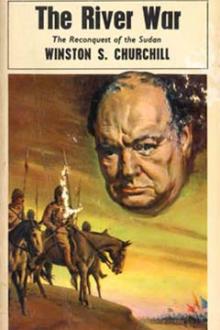
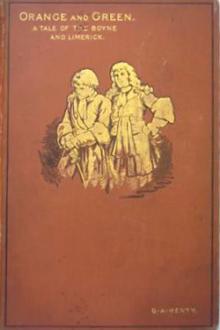
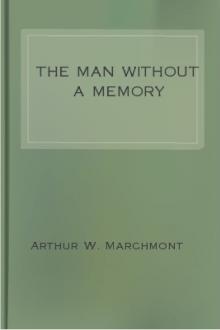
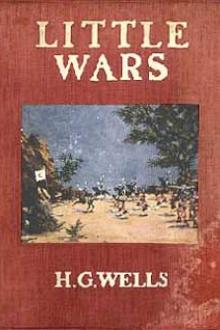
Comments (0)